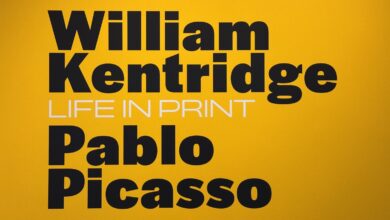Exhibit Review: ‘Chalef changeant/Wolf Willow’ at FAB Gallery
Rooted in Métis history and tradition, ‘Chalef changeant’ creates a sense of both nostalgia and optimism by highlighting the ancestral significance of land.
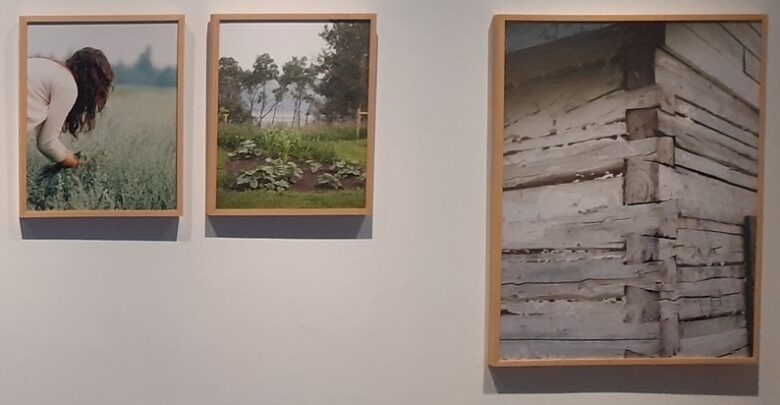 Natalia Gala
Natalia GalaMemories and stories intertwine in Red River Métis artist Robyn Adams’ photography, poetry, and cyanotype. Adams fully embraces her heritage while also making room for an optimistic future. In Chalef changeant/Wolf Willow, curated by Tiffany Shaw, images of gardens and plants are stirred to life by emotive poetry. There is an overarching theme of family and connectedness.
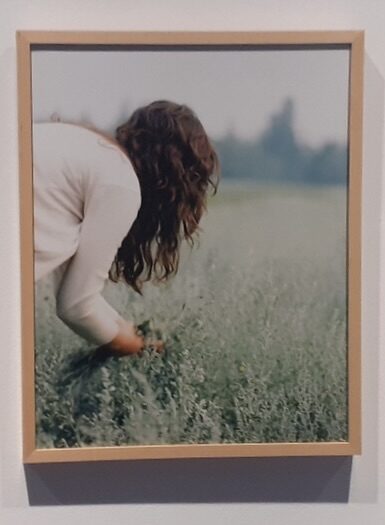
Adams’ photography focuses on the land. Specifically, the land is seen to take on a nourishing, mother-like role. Gardens and plants are depicted, with wood also being a predominant element. Such is the case in the photograph North Saskatchewan River Garden, where a humble garden is nestled in a small fleck of soil next to the river.
At first glance, this piece struck me as quite plain. The photograph was taken from a head-on angle and shows precisely what its title suggests. At second glance, however, I found that the simplicity translated over to genuineness and harmony. The photograph is a window to real life. Adams shows how even a small, unassuming piece of land can nourish its inhabitants. The stewards take no more than they need, and this creates harmony.
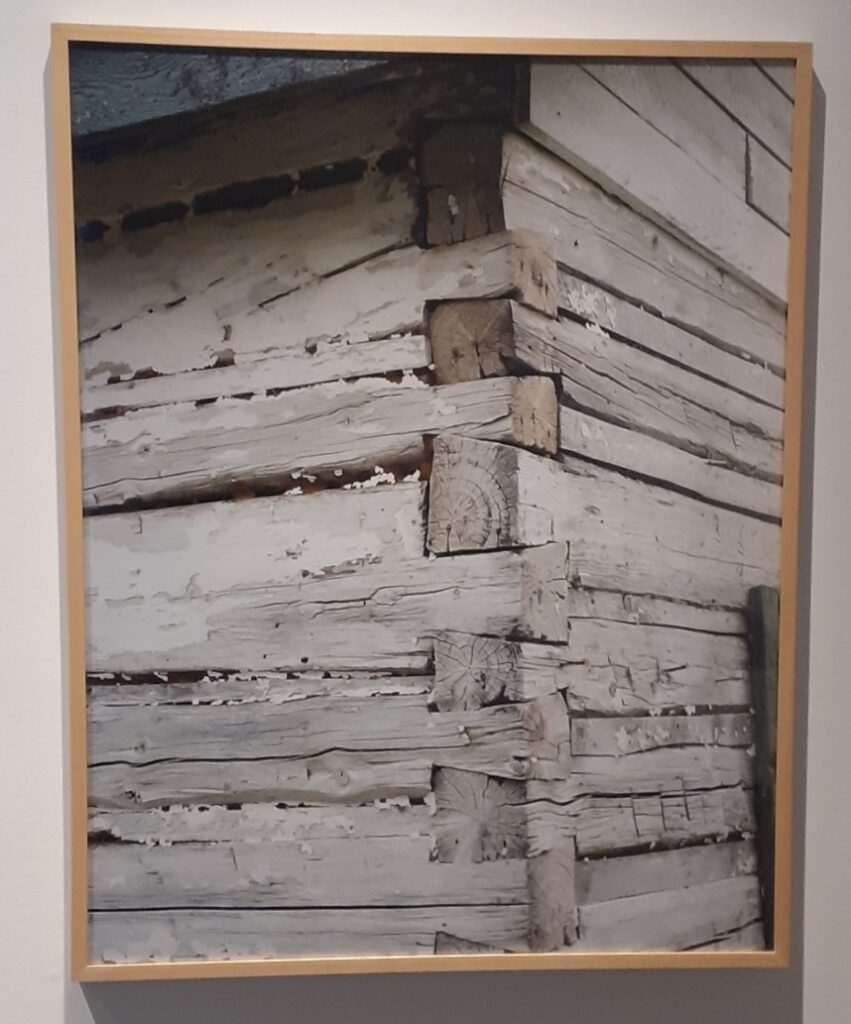
North Saskatchewan River Garden proves that it is possible to live-off of the land without disrupting it or imposing on it. The garden and its gardeners are perfectly in sync, and I sensed a similar message in the photograph Gather. Here, a woman is hunched over while picking peas in a wide field. Her face is obscured by her long hair. The fact that she is using her hands to pick the peas emphasizes the lack of barriers between herself and the natural world.
Meanwhile, in the photograph Sinclair Cabin with Dovetail Detail, only the side of a wooden cabin is shown. The close-up draws attention to the craftsmanship that was required to build the cabin. This is relevant in the context of Métis history, in that many Métis built their homes in this way. I also perceived the layered nature of the logs to have a deeper symbolic meaning, since each log fits onto the other like years and memories over time.
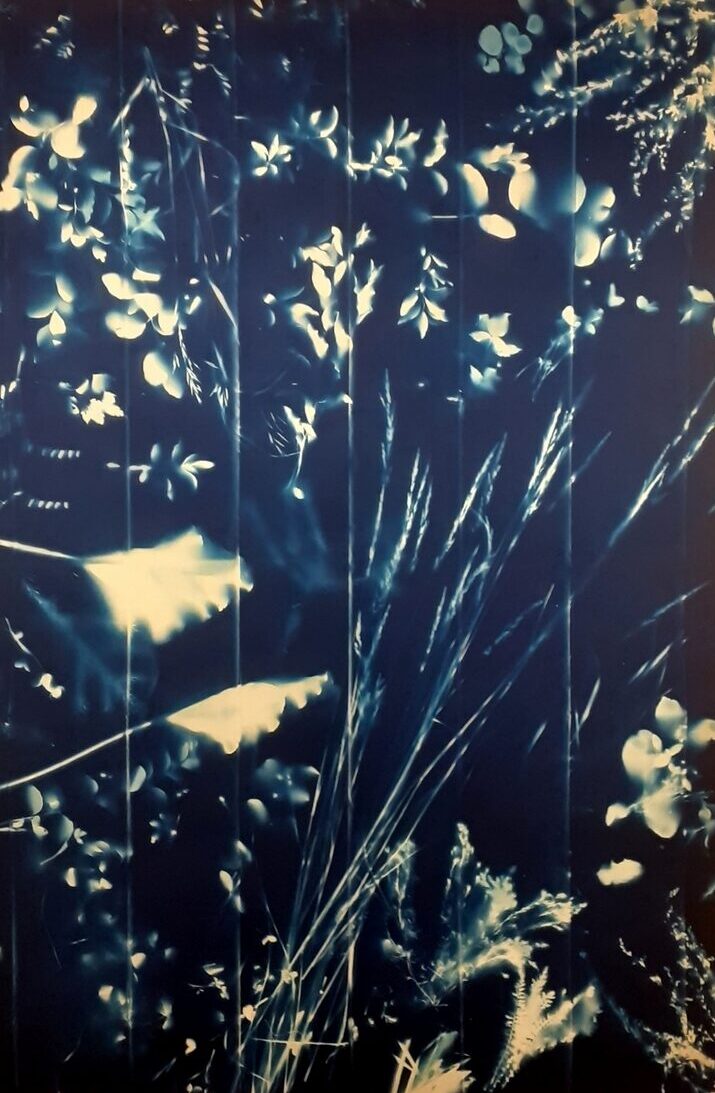
In contrast to Adams’ photographs, her cyanotype Charet Changeant is otherworldly and somewhat abstract. Familiar plants are recognized only by their shadow-like silhouettes. Native plants were gathered from the banks of the North Saskatchewan River in order to create the cyanotype, forever leaving their shapes on the fabric. The end result is hauntingly beautiful, much like Adams’ poem Pay Keeway.
Pay Keeway is printed on mulberry paper, and it serves to add extra depth to Adams’ visual artwork. I found this poem to be the highlight of the exhibit. It personifies the land and serves as a tribute to Adams’ ancestors, as well as to her own place in the world. Fleeting feelings of loss and detachment intersect vivid descriptions of changing seasons. Together with the growth of the garden, the changing of seasons symbolizes the passage of time.
By referring to the land as “she” and “her” in the poem, Adams again gives the Earth a mother-like character. The land becomes a part of her family, and a medium of connecting with the past. The use of Michif words in the poem strengthens this connection a thousandfold.
You don’t need to understand the words to comprehend their significance — they fit and fuse into the poem to become an indistinguishable part of its overall language. It is a language of courage and pride. Through the Michif language, Adams showcases the Métis way of thinking in its most honest form.
Even as Adams speaks of “ghosts,” the overarching mood of her poetry and artwork is one of hope and joy. Her art spans generations.
Chalef changeant/Wolf Willow was on display at the FAB gallery from February 20 to March 15.


